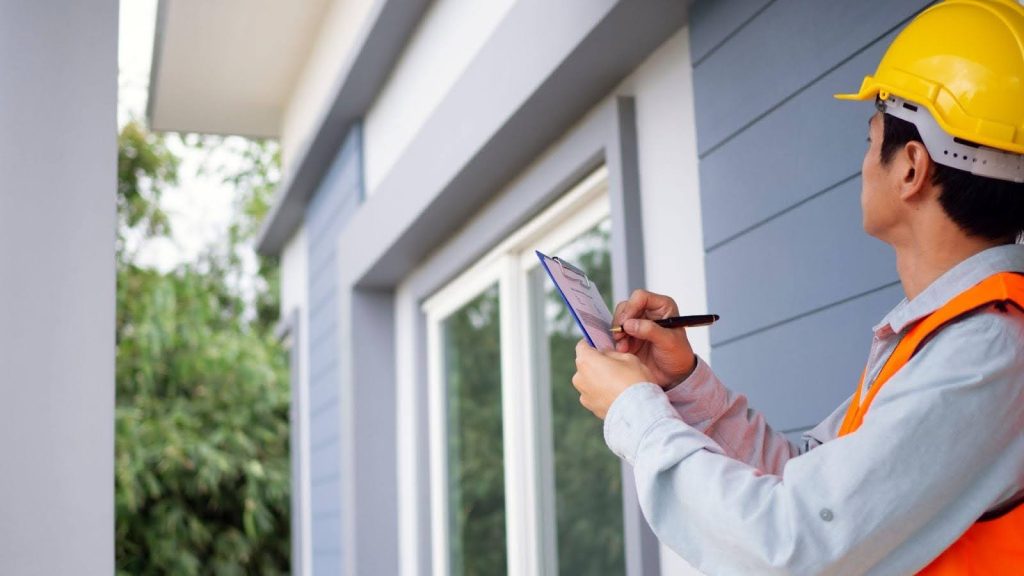Earthquake-Proof Your Home: Tips to Minimize Damage Risk
Earthquakes strike without warning, and the damage is often devastating when they do. From cracked foundations to collapsed walls, the effects of a major quake will leave your home structurally unstable and financially overwhelming to repair.
That’s why it’s so important to take proactive steps to earthquake-proof your home before disaster strikes. Strengthening your home’s structure, securing key items, and preparing an emergency plan will dramatically reduce your risk and give you peace of mind.
In this guide, we’ll walk you through practical, proven tips to help you minimize potential damage and stay safe during a quake.
And if your property does suffer damage, we’ll also explain how an experienced earthquake damage adjuster can represent your interests during the insurance claims process — helping you recover faster and with less stress.
Whether you’re in a high-risk zone or simply want to be prepared, this blog will help you protect what matters most.
Understand how earthquakes impact homes
Understanding how earthquakes cause damage is key to effectively preparing your home. When an earthquake occurs, it sends powerful seismic waves through the ground.
These waves shake the earth’s surface in all directions — up, down, and side to side — creating forces that your home was likely not designed to handle unless it was specifically built or retrofitted for seismic resistance.
One of the most common types of earthquake damage occurs to a home’s foundation. If a house isn’t securely anchored, it may shift, crack, or even slide off its base entirely. This kind of displacement often leads to severe structural instability and costly repairs.
Walls and support beams might also suffer from horizontal shaking. Unreinforced masonry is particularly vulnerable, like brick or stone chimneys and walls. These elements can crack or collapse entirely under seismic pressure, creating serious safety hazards.
The roof structure may also be affected, especially if the framing isn’t tightly connected. Shifting forces pull apart these connections, causing the roof to buckle or detach.
Inside the home, shaking has the potential to topple heavy furniture, water heaters, and appliances. Gas lines break, leading to fire risks, and glass shatters, increasing the potential for injury.
In short, earthquake damage compromises everything from the ground beneath your house to the items on your shelves. That’s why strengthening your home’s structure and securing interior items are essential parts of minimizing risk and staying safe.

Start with a professional home assessment
Before you make any upgrades or retrofits to earthquake-proof your home, the smartest first step is to schedule a professional home assessment. Earthquake damage often starts with weak spots in a structure, many of which aren’t obvious until it’s too late.
A qualified structural engineer or licensed contractor will evaluate your home’s ability to withstand seismic activity and identify exactly where improvements are needed.
During a home assessment, the professional will examine key structural components, including your foundation, framing, roof-to-wall connections, and any cripple walls (the short walls between your foundation and the first floor).
They’ll look for signs of vulnerability, such as unsecured framing, unreinforced masonry, aging materials, or outdated construction methods that don’t meet current seismic codes.
Homes built before the 1980s are especially at risk, as many were constructed without modern seismic reinforcements. But even newer homes may have issues, especially if they’ve been remodeled without permits or structural oversight.
After the inspection, you’ll receive a detailed report outlining areas of concern and recommended fixes. This gives you a clear starting point for reinforcing your home and prioritizing the most critical upgrades.
A professional home assessment doesn’t help you spot risks — it gives you a proactive plan to reduce the chance of severe earthquake damage. Investing in an inspection now could save you thousands in repairs later, and, more importantly, protect your family and property in the event of a major quake.
Reinforce your foundation
Your foundation is the most critical part of your home’s structure — if it’s compromised during an earthquake, the rest of the house is at serious risk. Reinforcing your foundation is one of the most effective ways to protect your home from earthquake damage and improve overall stability during a seismic event.
Anchor the house to the foundation
One of the most important upgrades to make is anchoring your home to its foundation using steel foundation bolts. These bolts secure the wooden frame of your house to the concrete foundation, helping prevent the structure from sliding or shifting during an earthquake.
Homes built before the 1980s often lack this reinforcement and are especially vulnerable to seismic forces.
Brace the cripple walls
If your home has a crawl space between the ground and the first floor, it likely has what’s called cripple walls — short, wooden walls that elevate the floor above the foundation.
These walls are a common failure point in earthquakes. To strengthen them, add plywood sheathing, also known as a shear panel, to increase their lateral stability and reduce the chance of collapse or warping.
Install shear panels or bracing
Shear panels and bracing help resist the sideways forces that occur during an earthquake. These reinforcements distribute seismic stress evenly throughout the structure and reduce the chance of structural failure. They’re especially important in homes built on sloped lots or uneven ground, where seismic movement can be more intense.
Check for foundation cracks or weak points
Before installing any reinforcements, inspect the foundation for existing cracks, crumbling concrete, or signs of settling. Any damage should be repaired first to ensure the new hardware is securely anchored. A professional structural engineer will guide you through the repair and reinforcement process to ensure your upgrades meet local building codes.

Secure the interior of your home
While reinforcing your home’s structure is critical, securing the inside of your home is equally important for reducing the risk of earthquake damage.
During a quake, everyday household items become serious hazards. Cabinets fling open, heavy furniture topples, and appliances shift, causing injuries, fires, or further structural damage. Taking a few key precautions will make your home much safer during and after an earthquake.
Anchor heavy furniture and appliances
Tall bookshelves, dressers, and entertainment centers can easily fall over during strong shaking. Use furniture straps or L-brackets to anchor them to wall studs. The same goes for large appliances like refrigerators, washers, and dryers. Securing them prevents tipping and potential gas or water line ruptures.
Secure your water heater
A loose water heater might tip over, damaging your plumbing and increasing the risk of fire if gas lines are involved. Most local building codes require water heaters to be strapped to the wall. Use approved metal straps to keep it tightly anchored.
Install safety latches on cabinets
Kitchen and bathroom cabinets are likely to fly open during a quake, sending dishes, glassware, and cleaning products flying. Installing child-safety latches or earthquake-rated cabinet latches keeps doors closed and contents safely inside.
Protect glass and fragile items
Store fragile items in lower cabinets or use padded liners and shelf edges to prevent breakage. Consider applying safety film to large windows or glass doors to reduce shattering.
Plan for escape and access
Make sure that large furniture pieces don’t block hallways or exits. In the event of an earthquake, you’ll want clear paths to move through your home quickly and safely.
Upgrade building materials where needed
Upgrading outdated or vulnerable building materials is one of the most effective ways to protect your home from earthquake damage.
Many older homes, and even some newer ones, are built with materials that can’t withstand the intense shaking of a strong earthquake. Reinforcing or replacing these elements strengthens your home’s ability to absorb and distribute seismic forces, helping prevent major damage or even total collapse.
Replace unreinforced masonry
Homes with brick or stone walls, chimneys, or foundations that haven’t been reinforced are at high risk during an earthquake.
These materials are heavy and brittle, and they tend to crack, crumble, or collapse when the ground moves. Retrofitting or replacing these structures with steel reinforcement significantly improves safety.
Upgrade to seismic-resistant materials
Where possible, consider using materials designed to flex and bend under pressure. For example, engineered wood framing, reinforced concrete, and specially treated steel can all better withstand seismic forces than traditional materials.
Install flexible utility connections
Standard gas and water lines are rigid, making them vulnerable to breakage during an earthquake. Installing flexible piping and automatic shutoff valves reduce the risk of gas leaks, water damage, and fires. These small upgrades go a long way in protecting your home and your family’s safety.
Strengthen roof-to-wall connections
Another common weak spot during a quake is where your roof connects to the walls. Adding metal connectors or framing clips reinforces this joint, helping to keep the roof securely attached, even during strong shaking.
Reinforce garage doors and openings
Wide openings, like garage doors, are more likely to fail under pressure if not properly reinforced. Upgrading these areas with bracing systems or impact-resistant framing helps maintain the structure’s shape and stabilize the rest of the home.

Create an emergency kit and safety plan
No matter how well you reinforce your home, earthquakes may cause power outages, block access to roads, or temporarily make your home unsafe.
That’s why you need a well-thought-out emergency kit and a clear safety plan. Preparing ahead of time ensures you and your family can respond quickly and stay safe in the immediate aftermath of an earthquake.
Build a basic emergency kit
Your emergency kit should contain essential supplies for at least 72 hours to support your household. Store everything in a sturdy, easy-to-carry container, such as a backpack or plastic bin, and keep it in a location that’s easy to access in a hurry. Key items include:
- Bottled water (one gallon per person, per day)
- Non-perishable food and snacks
- Flashlights and extra batteries
- First-aid kit and basic medications
- Portable phone chargers or power banks
- Whistle (to signal for help)
- Blankets, warm clothing, and gloves
- Copies of important documents (IDs, insurance info)
- Cash in small bills
- Personal hygiene items (toothbrush, wipes, etc.)
If you have pets, infants, or someone with medical needs, include additional supplies to meet their specific requirements.
Make a family safety plan
Discuss your earthquake safety plan with everyone in your household. Make sure everyone knows:
- Where to take cover: Identify safe zones in each room — under sturdy tables, against interior walls, and away from windows or heavy furniture.
- How to evacuate: Know multiple ways to exit your home in case certain areas become blocked.
- Where to meet: In case of widespread disruption, choose a meeting place outside your home and another outside your neighborhood.
- How to communicate: Make a list of emergency contacts and choose an out-of-state friend or relative to serve as your family’s communication point.
Practice your plan
Run earthquake drills regularly so that each member of your household knows what to do when the shaking starts. Practicing helps reduce panic during the real thing and ensures that everyone remembers their role in the plan.
Having an emergency kit and a clear safety plan won’t stop an earthquake, but it will help you stay calm, organized, and ready to act. Preparation is peace of mind, and that can make all the difference in an emergency.
Need an earthquake damage adjuster? Contact Hudson Douglas today
If your home has suffered earthquake damage, don’t face the insurance process alone. Turn to Hudson Douglas Public Adjusters — your trusted earthquake damage adjuster. We work for you, not the insurance company, to ensure your claim is fully documented, properly valued, and fairly settled.
Our experienced team understands the complexities of earthquake-related losses and fights to get you the compensation you deserve. We assess the full scope of the loss, document everything thoroughly, and handle all communication with your insurer.
Our goal is to ensure that you receive the maximum payout allowed under your policy without the stress of navigating it alone. From start to settlement, we work for you.
Contact Hudson Douglas Public Adjusters today, and let us take the stress off your shoulders while you focus on recovery and rebuilding with confidence.


